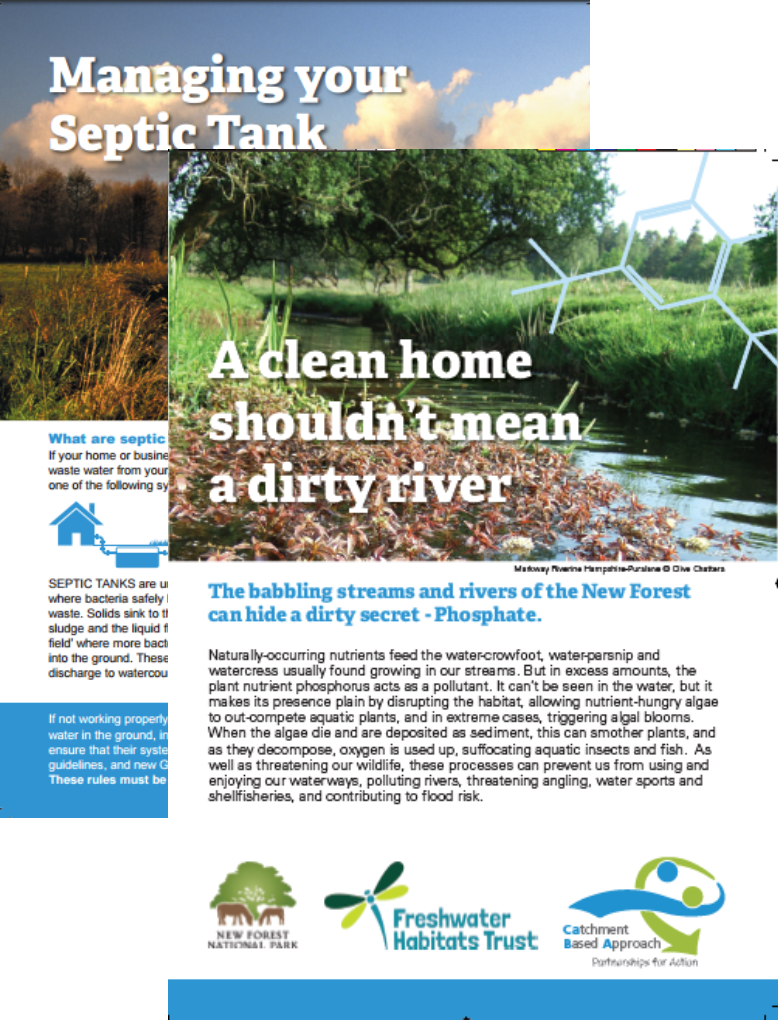A clean home shouldn’t mean a dirty river
23rd March 2018
In the New Forest, the Catchment Partnership is working to tackle and reduce the impact of phosphorus-rich wastewater on the local rivers, streams and ponds.

Coming from the food we eat and the cleaning products we use, the waste water from our homes and businesses is rich in the nutrient phosphorus. This colourless chemical may not been seen, but it can spell disaster for our rivers and their wildlife.
We can all do something about this and there are small steps we can take to reduce our phosphate ‘footprint’. Please read our two information leaflets (see below) to find out how to reduce your household phosphate output and how best to maintain septic tanks to ensure they are not harming wildlife.
What’s the problem with phosphate?
Phosphate is a plant nutrient meaning that it encourages plants to grow. In our waterways, it fuels the growth of algae, at the expense of the larger aquatic plants that should naturally be there. This is bad news for the insects and fish that rely on those larger plants for shelter or food. In severe cases, phosphate triggers algal bloom, turning habitat green. A cascade of events can then lead to oxygen depletion, suffocating aquatic insects and fish.
What can you do to reduce your ‘phosphate footprint’
Within the household, the main culprit is detergent in products we use for cleaning ourselves, our cloths and our houses. Phosphate is unnecessarily added to many detergents to make them bubble up when used. Many low phosphate or phosphate free products are available and are as effective in removing dirt. Watching what we used in the home can make a big difference to freshwater plants and animals and the quality of our waters.
Many smaller waste water treatment works and all private systems (like septic tanks) don’t have the capability to remove phosphorus during treatment, and so it is discharged into the environment and pollutes our rivers and streams. You can make a real difference simply by using products without phosphate in the first place. In places like the New Forest, where most people are connected to small treatment works or are on septic tanks, it is even more important to watch what products we use.
There are many low phosphate, and even phosphate free, products out there. To learn more about phosphate pollution and reducing your phosphate footprint please see our ‘a clean home shouldn’t mean a dirty river‘ leaflet.
Ensuring septic tanks and small sewage treatment works are fully functioning can also help to reduce phosphate pollution in local freshwater habitats. Please read our ‘ten top tips‘ leaflet on how best to maintain your septic tank.
